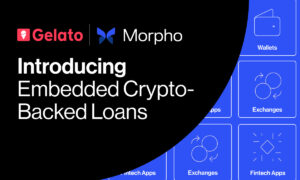Since their inception, cryptocurrencies such as Bitcoin, Ethereum, and Litecoin have enabled anybody to participate actively in the evolution of the cryptocurrency market. However, the large waves of volatility have turned off a lot of potential players. This is when stablecoins came into the picture for their stable benefits.
While fiat currencies, such as the USD or EUR, were supported by the market’s faith in the issuing governments, stablecoins attain their price by their underlying assets like gold, fiat currencies, or cryptocurrencies. They offer stability in a volatile market while retaining all features of a regular cryptocurrency.
Tether (USDT) was the first stablecoin that came into existence. It started as Realcoin that was widely described as a “stablecoin” that maintained a fixed 1:1 exchange ratio with the U.S. dollar. Tether has pioneered the fiat-collateralized stablecoin paradigm that primarily allowed investors to track their crypto investments.
The Stablecoin Era After the Tether Boom
As Tether grew in prominence, other issuers also created their own stablecoins to provide more stability to the crypto market. TrueUSD (TUSD) was one of the first regulated Stablecoin that came after Tether which was completely backed by the US Dollar. It was 100% secured by US funds in legally protected escrow accounts with various bank partners, bringing security and efficiency to payment transfers.
MakerDAI (DAI) stablecoin was another well-known stable cryptocurrency that caught the eyes of many. Although the price of DAI Stablecoin stays at $1.00, it is supported by redundant Ethereum-based smart contracts. External market forces like collateralized debt positions (CDPs), autonomous reaction mechanisms, and external economic incentives help to stabilize DAI. It has been more decentralized since only users have the ability to produce and destroy tokens. They exist only once the deposit is paid and vanish after the loan is settled. MakerDAO is the brainchild behind DAI tokens.
How EURST is Ensuring Stability and Investor Safety
Stablecoins have enabled a significant and rising amount of digital asset trade by allowing market players to swiftly convert volatile digital assets into digital assets with more perceived stability. It has now become apparent that there needs to be backing for stablecoins to ensure stability and investor safety. In fact, with the advancement in blockchain, stablecoins are now being pegged to crypto. Algorithmic stablecoins are also powering the crypto-mania with high-level stability in prices.
EURST is one such stablecoin that adds value by becoming the most transparent and reliable 100% USD-backed euro stablecoin. Issued as a token on the Ethereum network, EURST’s advanced blockchain capabilities enable users to conduct faster and secure transactions. This stablecoin uses smart contracts which digitize deposited funds that are held in a segregated account by the issuer. Thus, empowering users to transact their money without the high costs and lengthy delays of the current financial system.
Unlike most stablecoins, EURST keeps 100% fiat assets as collateral, and moreover the funds are held in an escrow account for the benefit of the token holders. As an addition, the stablecoin is aimed at being totally transparent by being audited in real-time – users can track the funds held in escrow at any given moment, vs. the tokens in circulation. Ultimately, EURST’s goal is to be the secure and reliable bridge to the digital assets space and to be used as a preferred digital payment method.



































